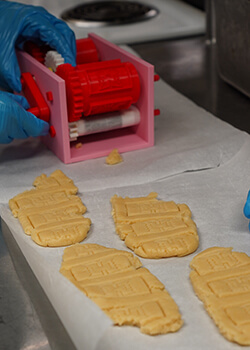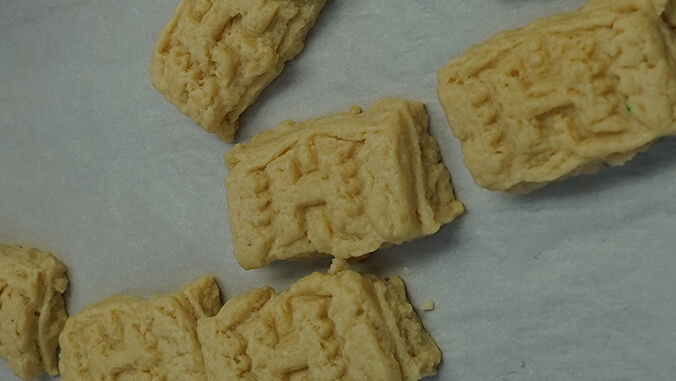
University of Hawaiʻi at Mānoa College of Engineering students had a real-world taste of manufacturing processes in the sweetest way possible. Through a project led by Assistant Professor Tyler Ray, and in collaboration with Food Science and Human Nutrition Instructor Lara Hackney, nine teams of five students were tasked to produce sugar cookies bearing the UH logo using self-designed production systems.
After weeks of designing and planning, the students finally put their systems to the test in a bake-off, seeing which team could produce the most number of high-quality cookies in the shortest amount of time.
“I’m a firm believer in project-based learning,” said Ray. “By challenging our students to design and build a system to make sugar cookies with the UH logo, we’re not only teaching them about traditional manufacturing processes but also fostering creativity and problem-solving skills that are critical to their success as engineers.”
The project required students to work with a $20 budget for their cookie rolling systems, including the 3D-printed UH logo cookie cutters and any additional components, such as the system’s frame. Through the budget restriction, Ray intended to inspire students to focus on low-resource engineering and creative problem-solving, emphasizing the importance of resource management and the creation of sustainable and cost-effective engineering designs.


Most teams created machines that flattened the dough similar to a pasta roller, simultaneously imprinting the dough with the UH logo. Others developed stamping systems to cut and imprint cookies, while another used manual labor to push their intricate system in a manner akin to a cookie roller across a large slab of dough to produce a greater yield.
“Getting this hands-on experience and seeing how a design comes to life is very useful to learn about different manufacturing processes and what it actually takes to get from a computer design to an actual product,” said Anna Kiraly, a junior majoring in mechanical engineering. “In the simulations we design, everything works fine, but when we get to the point where it needs to work in real life, the outcome is very different from what we expect.”
Eyes on collaboration and food security
In December 2022, Ray and another class of students created custom 3D-printed chocolate molds for local chocolate company, Choco leʻa. Building on the food theme, Ray’s cookie production project further expanded the relationship between food and engineering machines to assist with food security.
By bridging the gap between engineering and food sciences, the project has fostered a new generation of engineers who are keen on utilizing their skills to address pressing global challenges such as food security and sustainable food production.
Kiraly said, “This project and what we’ve been learning so far in this class is basically reinventing food production and manufacturing in a way that takes into account the environment of a place. It could be that the place doesn’t have good food accessibility, so these are the types of machines that you could use at a low budget for a good output.”
Read more at the College of Engineering website.


